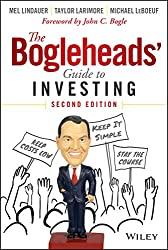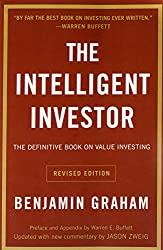
So maybe you’ve been investing through your company’s 401k plan for a few years. Maybe you also have started up a taxable account to buy index funds. These are both key foundations of a financially fit lifestyle that will reward you greatly in life. But maybe you are looking for a little bit more and are interested in picking up a few individual stocks as well. Today we start a series of articles on the details of individual stock investing, starting with the basic mechanics of what you do, then going into investing strategies and how to find stocks that match the strategy. If you’re wondering why you should consider individual stock investing, check out The Advantages of Single Stock Investing.
(Note, if you click on a link in this post and buy something from Amazon (even if you buy something different from where the link takes you), The Small Investor will receive a small commission from your purchase. As an Amazon Associate I earn from qualifying purchases. This costs you nothing extra and is the way that we at The Small Investor are repaid for our hard work, bringing you this great content. It is a win-win for both of us since it keeps great advice coming to you (for free) and helps put food on the table for us. If you don’t want to buy something from Amazon or buy a book, how about at least telling your friends and family about our website as a great place to learn about investing and personal finance. Thanks!)

Before we get started, hopefully, you’ve found the book, The Boglehead’s Guide to Investing. This book provides all of the details on index fund investing, which should be about all that you are doing inside your 401k and for the bulk of your investments elsewhere once you have a substantial portfolio to worry about. Index funds provide an easy way to spread out your investments into several areas, which reduces your risk of substantial losses and also makes sure you at least get market returns. This is nothing to sneeze at, as many professional money managers do not get market returns, so your success investing in individual stocks is not guaranteed.
Before index funds and mutual funds in general existed, individual stock investing was really the only choice you had if you wanted to invest in stocks. Today it is more of a way to possibly increase your returns, if you use the right strategy. Some individuals use it as a form of entertainment, whether they realize it or not.
How do you set yourself up to invest in individual stocks?
To buy individual stocks, you first need a brokerage account. If you are buying mutual funds through a non-work account (meaning not a 401k account), you probably have the ability to buy and sell individual stocks already. If you don’t, you’ll need to set one up before you get started. There are many brokerage firms out there. Big names are Merrill Lynch, Charles Schwab, and JP Morgan, among others. The index fund goliath, Vanguard, also offers brokerage services. Your bank may even have connections with a brokerage firm.

Want all the details on using Investing to grow financially Independent? Try The SmallIvy Book of Investing.
Setting up an account is really easy, often as simple as filling out some forms online and funding the account by sending in a check or transferring money electronically from your bank account. To find out more, just visit their website or give them a call.
Full service and discount brokers
Speaking of brokers, there are two general types: Full-service and discount. An example of a full-service broker is Merrill lynch. These firms offer a lot of service and advice to the client. Many firms will assign a specific broker to you, meaning that you can build up a relationship with a specific person who can learn about your investment objectives and desires. Many times you’ll have the same broker for years or decades, where perhaps you’ll end up inviting him or her to your daughter’s wedding. You can call or email and ask for them to provide suggested investments based on some requirements. They will also give a lot of help in entering trades. Finally, there is often a lot of what is called “research,” which is information on different companies, generally available from full-service brokers. You can often get this information through their website or just by calling them up and asking.
An example of a discount broker is Charles Schwabb. Discount brokers provide the bare minimum in terms of services. You are expected to know what you want to buy and be able to place orders effectively. You will probably not have a specific individual assigned to you, instead entering trades through a website or calling a pool phone number. They are very efficient in placing trades, but there is very little handholding.
Which type of broker is right for you? Full-service brokers charge a lot more than discount brokers. A trade through a full-service broker may cost $150, where the same trade through a discount broker might be $50 or even $25. You’re paying for that extra service from a full-service broker. If you need things like their research, are just getting started and want help placing trades, or perhaps want other services like linked debit cards or even vacation concierge services, a full-service broker may be the right path for you. If you’re comfortable doing your own research and finding out what you want to buy, a discount broker is a good way to put more money into investing and less into your broker’s pockets.
That said, if you trade infrequently, which is the best way to invest, the difference between using a full-service and a discount broker will matter a lot less. If you do two trades per year, paying $300 versus $100 on a $50,000 account will not make much of a difference. The access to research and the relationship you get with one specific individual (but who might be calling from time-to-time, trying to get you to trade more often) is well worth the extra cost. If you’re trading every week, because again you’re using stock investing as a form of entertainment, that price difference will add up quickly.

How do you enter trades?
Entering stock orders is very simple, but there is a bit of terminology that you need to learn. You need to tell your broker, either over the phone or via a web interface, 1) whether you want to buy or sell, 2)what you want to buy or sell, 3)how much you want to buy or sell, and 4) what type of order you wish to place. (There are a few other types of order like short sales and stop-loss orders, but we won’t go into those here.) Often you indicate what you want to buy or sell using a stock ticker symbol. For example, if you wanted to buy Google, you might give their symbol, GOOG. This helps to avoid confusion.
You specify how much of a stock you want to buy or sell in shares. The price of a stock is quoted in price per share, so the price you pay (or get) will be the number of shares you buy (or sell) times the share price. For example, if you wanted to buy 100 shares of XYZ stock and it was currently trading for $50 per share, you would pay 100 x $50 = $5000 (plus a fee to the broker). Often you buy and sell shares in increments of 100, but this is not absolutely necessary.
As far as the type of order goes, the main types of orders are market orders and limit orders. With a market order, you take whatever price the stock is trading at right now. With a limit order, you specify a specific price at which you will buy or sell the shares. In general, if the stock is trading frequently and you really want to buy or sell the shares, a market order is the best approach. If the stock is thinly traded, such that the price jumps a lot, or if you kind of want to buy or sell the shares but only if you can get a certain price, a limit order may be the right choice.

Placing the order
To actually place a trade, you would go to the website for your brokerage firm or call them up and give your order, placing all of the information needed together. For example, if you wanted to buy 300 shares of Amazon using a market order, you would tell your broker the following:
“Buy 300 shares of AMZN at the market.”
You could also say “Amazon” instead of using the symbol if you are entering the order on the phone. If you wanted to place a limit order, where you wanted to see 200 shares of Google at $300 or more per share, you would say:
“Sell 200 shares of GOOG, limit of $300.”
With a limit order you might also say “day order” or “good til canceled.” A day order means that it will be canceled if it isn’t executed by the end of the day and you’ll need to enter it again the next day if it doesn’t and you still want to sell the shares. Good ’til canceled means they’ll keep entering the order each day for a period of 30 days, or until it is executed, whichever comes first. By default, most limit orders are day orders, but specifying good ’til canceled is normally wise since it keeps you from needing to keep entering the order.

Need to catch up on your reading but don’t have time? Are you a big fan of listening to books and podcasts? Try Audible Plus
Learning more
This is only a start in what you need to know to be successful investing in individual stocks. If you want to learn a lot more about stock investing, including a great strategy for possibly making market-beating returns over time, please check out The SmallIvy Book of Investing, Book 1: Investing to Grow Wealthy. There are also a lot of other great books on investment strategy such as The Intelligent Investor that you should definitely check out.


Other great books for learning investing:
Likewise, taking a loan against your 401k is also a bad idea. If you end up leaving the company (on purpose or involuntarily), that loan will become due at once. If you lack the money, you will be penalized. If you need to borrow money, see a bank, not your 401K.
Have a burning investing question you’d like answered? Please send to [email protected]m or leave in a comment.
Disclaimer: This blog is not meant to give financial planning or tax advice. It gives general information on investment strategy, picking stocks, and generally managing money to build wealth. It is not a solicitation to buy or sell stocks or any security. Financial planning advice should be sought from a certified financial planner, which the author is not. Tax advice should be sought from a CPA. All investments involve risk and the reader as urged to consider risks carefully and seek the advice of experts if needed before investing.
